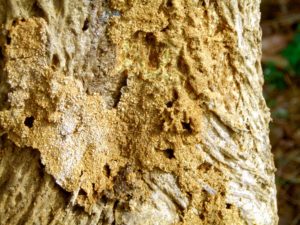Read and Learn More About Pests
Three Types Of Spring Termites To Watch Out For Termites are a big problem for US homeowners, causing over $3 billion dollars a year in damage to homes across the country. About 3% of all homes in the United States currently have a termite issue, and many homeowners aren’t even aware there’s a problem.
Termites are a big problem for US homeowners, causing over $3 billion dollars a year in damage to homes across the country. About 3% of all homes in the United States currently have a termite issue, and many homeowners aren’t even aware there’s a problem.
Certain termite species thrive when the weather warms up, and you may have noticed swarms of these pests in and around your neighborhood. Depending on where you live, spring is a crucial time for termite management. Here are three particularly nasty termite species who love nothing more than to soak up the spring weather (and eat your walls.)
Subterranean
Subterranean termites are far and away the most common species in the US, and they cause the most damage, too. They live in colonies that can number up to 100,000 and they function much like bee hives with a queen that can lay thousands of eggs a day. Subterranean termites burrow into homes from the outside, usually in cracks within the foundation. They’re easy to spot by the small holes they leave in wood and siding and most often appear in basements and bottom floors. If you’ve noticed signs of Subterranean termites, call a professional immediately.
Drywood
Drywood termites aren’t as common as their Subterranean peers but they cause tens of millions in damages nonetheless. They prefer dried, more arid climates like the Southwest and parts of Texas, but they’ve been known to inhabit coastal areas along the Gulf as well. These critters can fly, so they often enter homes in the attic or through open windows, and since they don’t need much water to survive they can live undetected for years before being found out. They don’t just eat lumber…they’ll eat any cellulose from paper to books to sheetrock.
 Dampwood
Dampwood
Dampwood termites are a species found mainly in the Pacific Northwest where it’s nearly always wet and cool. They prefer to feast on, well, damp wood, which is not as common in solidly built homes. They’re often found in heavily forested areas and love to nest in rotting stumps and plant matter. But if you’ve got a leaky basement or a squishy foundation you can rest assured they’d make themselves at home there too if they found their way in.
Spring is the perfect time to start a termite preparedness plan – keeping the bugs at bay is far easier than getting rid of them once they infest. Call a termite pro in your area now to find out more about your options for spring termite control.
More Pest Control Solutions
Read Reviews
Read reviews by other customers like you.
Research
Tips and articles to help you select a pest control provider.
Find Providers
Find a qualified pest control provider in your area.

